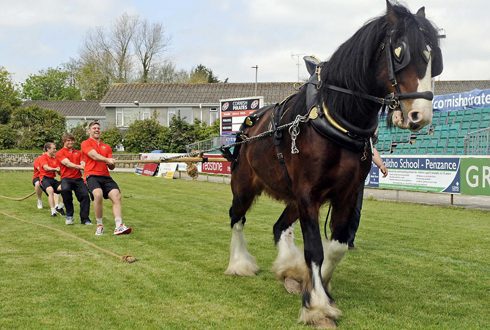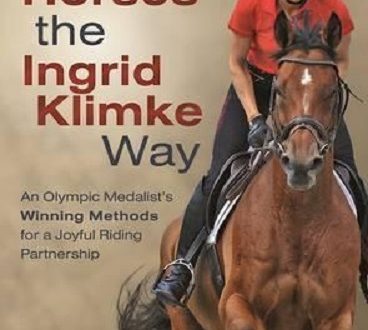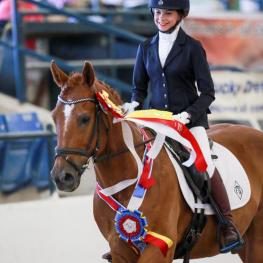
Dressage test: exercise “Crossing the street”
Dressage test: exercise “Crossing the street”
It’s no secret that sometimes you can get bored in the arena. Even the strongest, most cohesive, loving and well-coordinated horse-rider team sometimes falls into despondency, circling in endless circles, serpentines and riding from letter to letter along the same trajectories over and over again.
Introducing variety into training helps to revive interest in learning and has great benefits. Sometimes a deceptively simple template can lead to significant performance improvements. Below I want to introduce you to the Crossing the Street exercise described in the book by Anne Catherine Kerbach. “The 50 Best Shapes and Templates to Work in the Arena”.
Crossing the street, you can work on bending, cornering, transitions and straightness by keeping the horse’s hindquarters active. Using the template below, you will be able to perform this exercise at different gaits and at different paces, depending on the skill level of your pair with your horse.
What do you need?
4 cones and 4 places.

Fig. 1.
Template setup
Place the cones and poles as shown in Figure 1. Leave a distance of about 1,20 m between the cones and poles. (The poles and cones should be further apart as the pace increases.)
How to work on the exercise?
1. Start walking the exercise. Moving in a straight line, drive through the template. After you have exited the other side, drive the semi-circle and enter the template again (Fig. 1). Change direction through the center.
2. Work on the template along other movement paths (Fig. 2 and 3). Choose specific points where you will perform transitions (for example, on cones).
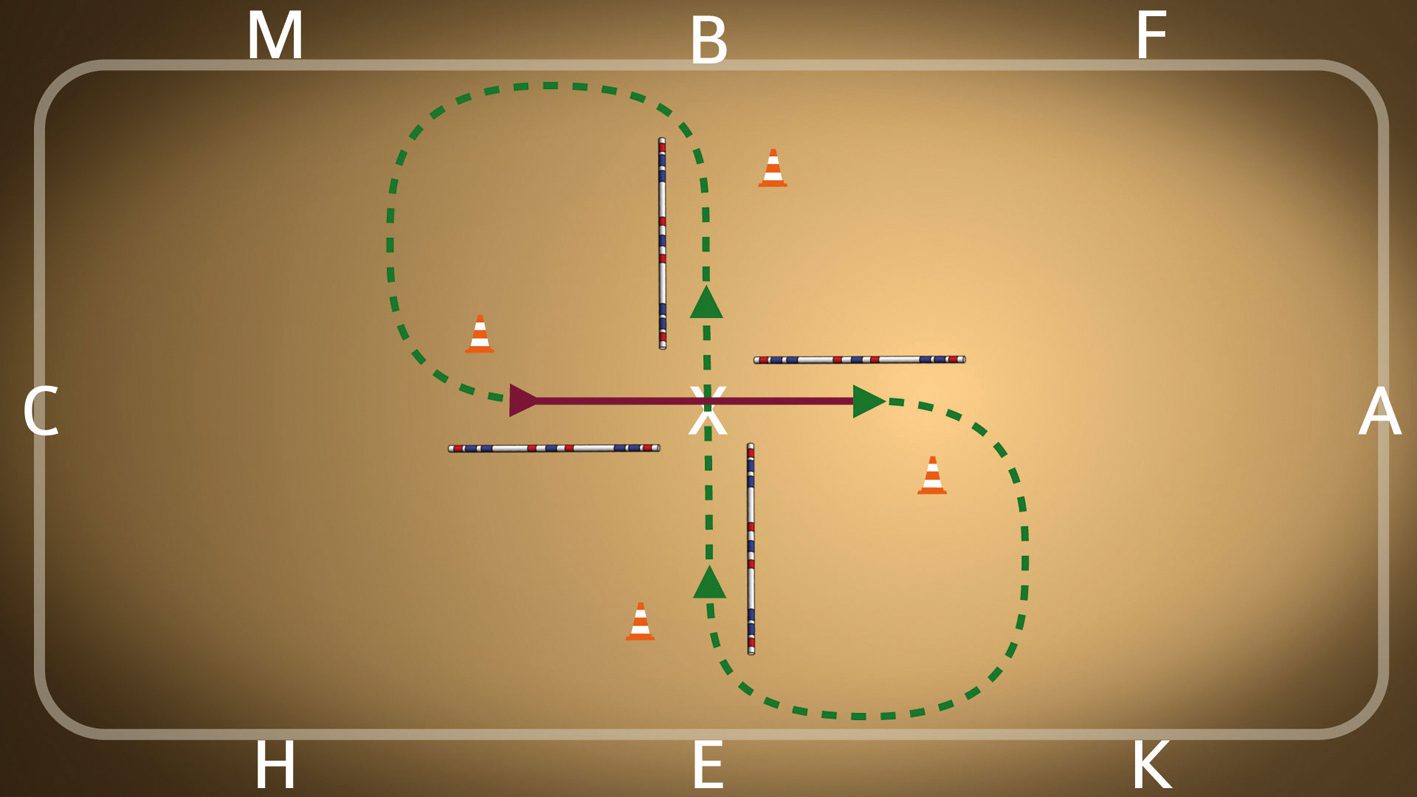
Fig. 2.
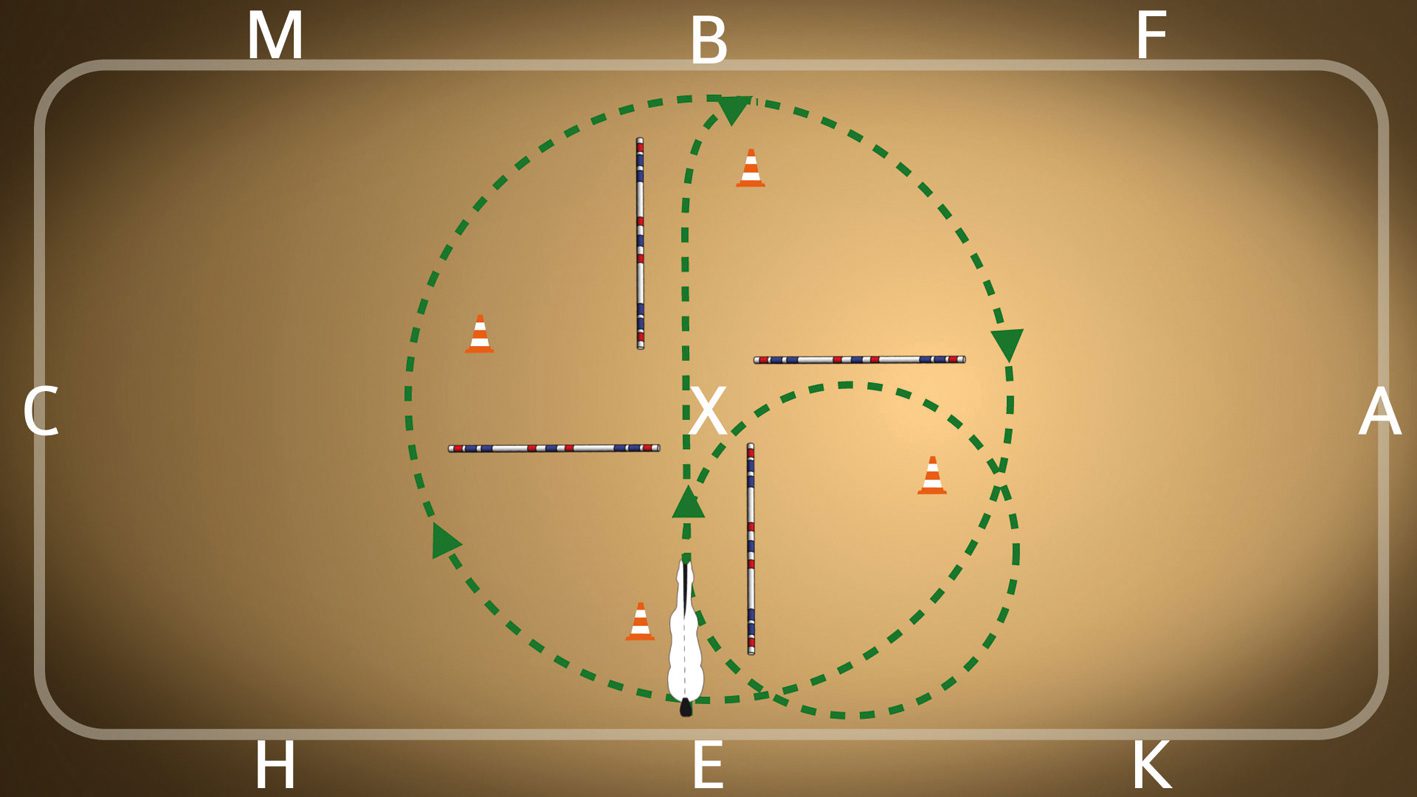
Fig. 3.
Council: plan ahead! Determine for yourself the trajectory of movement, and then look in the direction in which you want to go. When you transition, remember to move your horse forward, even as he transitions to a slower gait. Keep in touch.
What is the horse learning?
The horse learns to listen and hear the rider. pay more attention to his signals. She actively steps with her hind hooves under the center of gravity, makes transitions between gaits.
What is the rider learning?
Bend the horse into turns. Straighten the horse and move it in a straight line. It makes the impact of the controls more subtle. Learns to put the horse in a certain frame using the controls. Learn to transition between gaits.
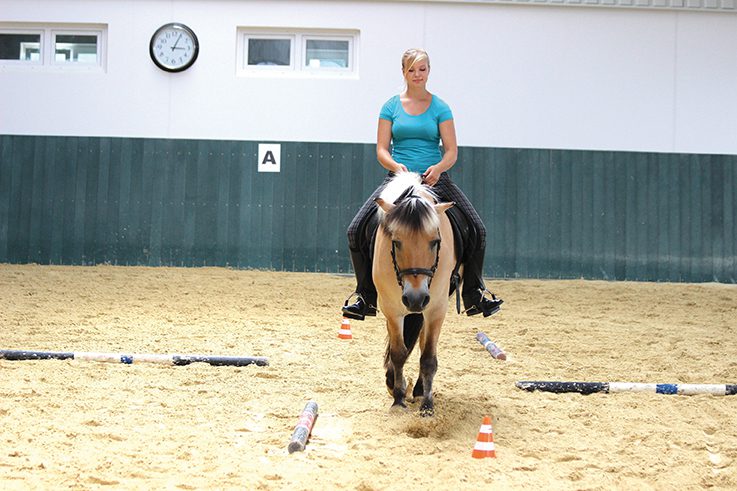
What to do, if …
…is your horse moving his hindquarters outward, falling out with his hip out?
Don’t just use the reins, drive with your whole body. Work in a large circle around the template so you can check if the flexion and active work of the buttocks are maintained throughout the trajectory.
…is your horse in a hurry on transitions?
Change direction. Let the horse constantly think and listen to your signals. Don’t make transitions too close to each other.
…as the exercise progresses, the horse becomes more and more lazy?
Turn on big circles!
Rebecca Didier (source); translation by Valeria Smirnova.




